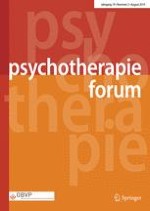01.08.2014 | Bindung und Psychotherapie
Bindung und Beziehung – eine Analyse aktueller psychoanalytischer Forschungsansätze
Erschienen in: Psychotherapie Forum | Ausgabe 2/2014
Einloggen, um Zugang zu erhaltenZusammenfassung
Das Thema der Bindung wird in verschiedenen Forschungsfeldern wie der Entwicklungspsychologie, der Psychoanalyse und der Kleinkindforschung immer wichtiger. Dieser Artikel behandelt zwei zentrale psychoanalytische theoretische Konzepte zu Bindung. Zu Beginn werden theoretische Ansätze aus der Bindungsforschung oder Attachment Theory von Bowlby, sowie Konzepte aus der Objektsbeziehungstheorie von Klein und Bion erläutert und verglichen. Im Anschluss werden die Schutzfaktoren von sicheren Bindungsverhaltensweisen aufgezeigt und die Risikofaktoren sowie psychischen Auswirkungen bei unsicheren Bindungsmustern diskutiert. Zum Schluss werden zukünftige Forschungsmöglichkeiten aufgezeigt und eine Synthese von Forschung in der Objektbeziehungstheorie mit Konzepten der Bindungsforschung vorgeschlagen, die es ermöglichen, einen weiterführenden Zugang zur Bindungsforschung zu konzipieren.
Anzeige
